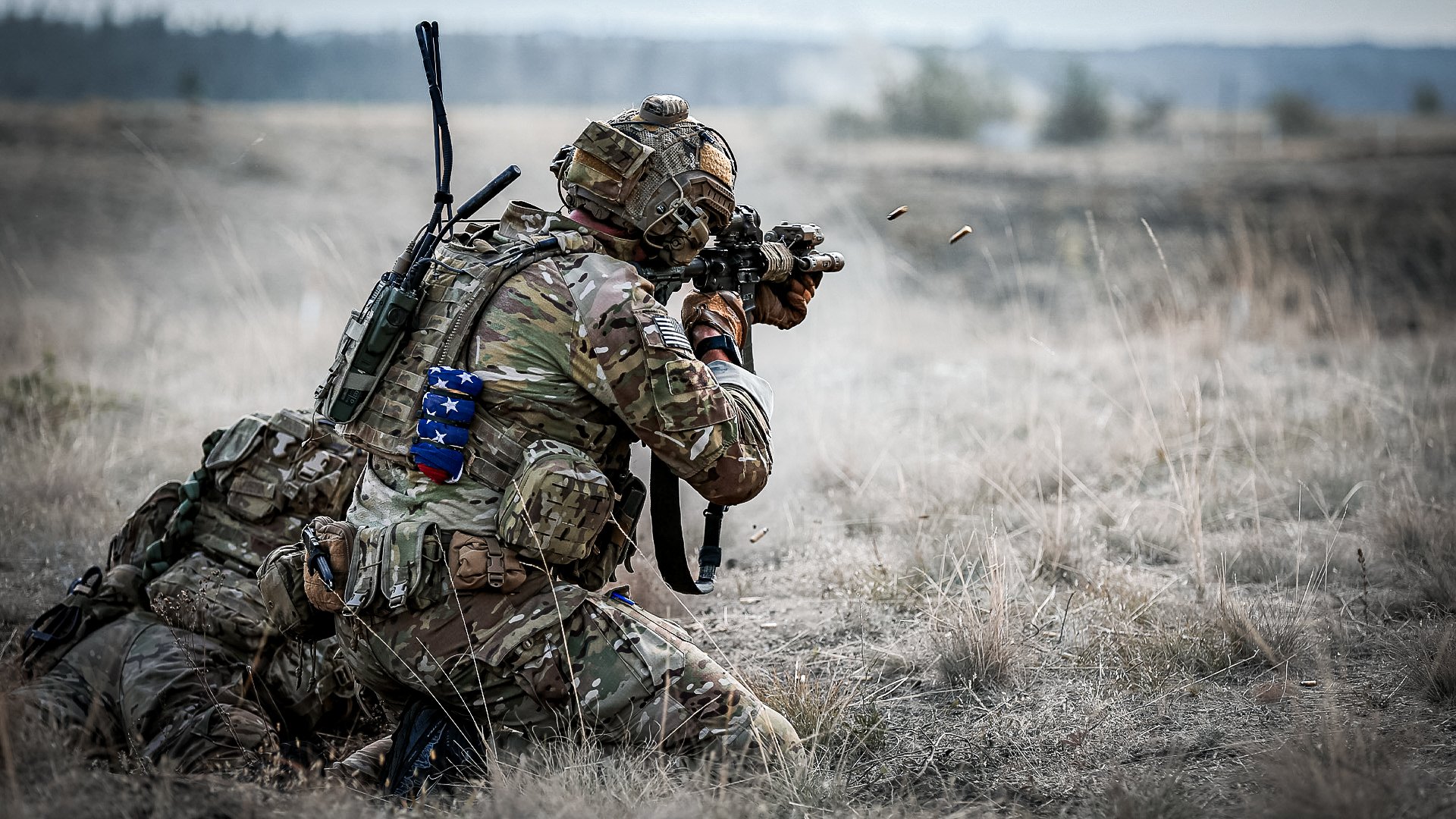
Army Rangers of the 75th Ranger Regiment conduct field training for a unit TFT (Task Force Training) operation on Joint Base Lewis - McChord, Wa., Aug. 20, 2019. US Army photo by Spc. Garrett Shreffler.
On Aug. 19, 1942, 50 United States Army Rangers — a strike force of specially trained infantrymen — joined a Canadian-led amphibious assault on the Nazi-occupied French coastal town of Dieppe. The hope was that the operation, if successful, would boost troop morale and also show the Soviet Union that its Western allies were serious about fighting the Germans.
Suffice it to say that the operation was a disaster. The invasion force never made it beyond the beach. Nearly 4,000 Allied troops were killed. Most of those who survived were left stranded on shore and taken prisoner.
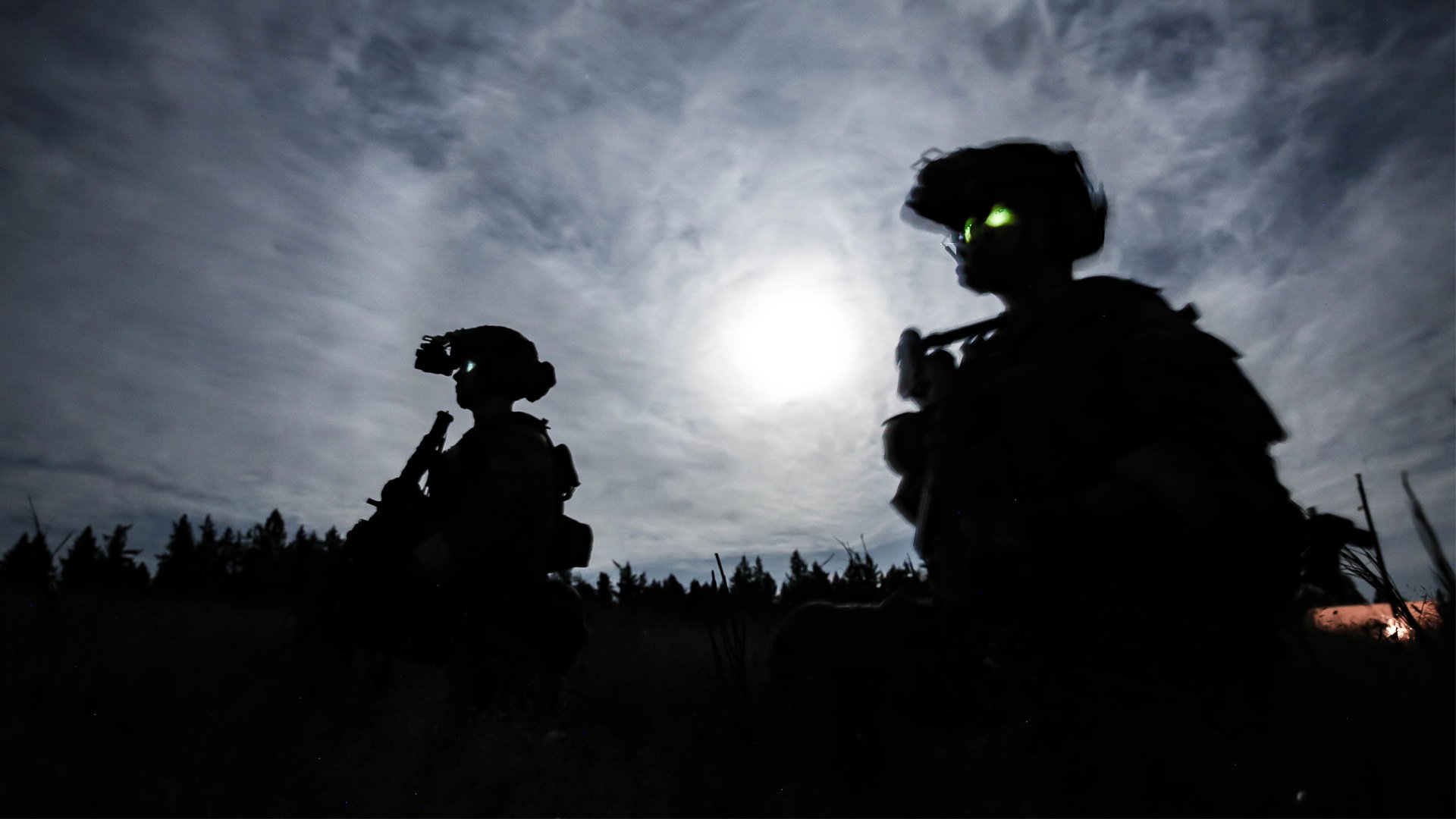
Rangers conduct night training, Aug. 14, 2019. US Army photo by Spc. Garrett Shreffler.
Among those who lost their lives that day were three members of the 1st Ranger Battalion. One of them, Lt. E. V. Loustalot, died while leading a group of British Commandos in an assault on a clifftop machine gun position. Shot twice, Loustalot continued to press the attack in spite of his injuries. A third bullet killed him before he reached the top of the cliff. He is considered the first American killed in battle on European soil during World War II.
Loustalot’s actions at Dieppe exemplified the warrior ethos that is ingrained in the 75th Ranger Regiment. Two years later, when the Rangers returned to France for the invasion of Normandy, they proved once again why the elite soldiers belong at the tip of the spear. In the eight decades since, through many conflicts and high-stakes missions, the Rangers have upheld their reputation as some of the most tenacious, lethal, and resilient warfighters in the US military.
Related: What It Means to Be an Army Ranger, According to 7 Rangers
Church’s Rangers: The Regiment’s Native American Origins
The history of the Army Rangers predates the United States itself. Although the names of its various units have changed over the years, the lineage of the 75th Ranger Regiment traces back to King Philip’s War in the 17th century.
In terms of fatality rate per capita, King Philip’s War ranks as the deadliest war in American history. It was fought between British colonists and a confederation of Algonquin tribes. In 1676, as the war entered its second year, Benjamin Church, a New Hampshire militiaman, formed a company of irregulars to aid New England’s forces. Church and his men called themselves “Rangers.”

Army Rangers from Delta Company, 2nd Battalion, 75th Ranger Regiment, get on line to provide security and lay down suppressive fire during a day live fire exercise at Fort Hunter Liggett, California, Jan. 25, 2014. US Army photo by Sgt. Ryan A. Goldsmith.
Unlike conventional soldiers, the Rangers operated in small groups. They borrowed many of their tactics from the Wampanoags, employing stealth and ambushes rather than large formations and heavy weaponry. The Rangers’ unorthodox fighting style made them highly effective against the elusive Algonquins. They were the first colonists to ever successfully raid a Native American camp.
The war was also significant in establishing a uniquely American identity, as no European powers, including Britain, came to the aid of the isolated colonists. Even when America’s identity was in its infancy, a company of Rangers was there to lead the way.
Related: Buffalo Ranger’s Book Recalls the All-Black Special Operations Unit
Rogers’ Rangers: America’s First Special Operations Unit
The origins of the 75th Ranger Regiment are often wrongly traced back to Rogers’ Rangers of the French and Indian War. Major Robert Rogers, another New Hampshire militiaman, formed his company of Rangers in 1755 to aid the British Army in their fight against the French and their Native American allies.
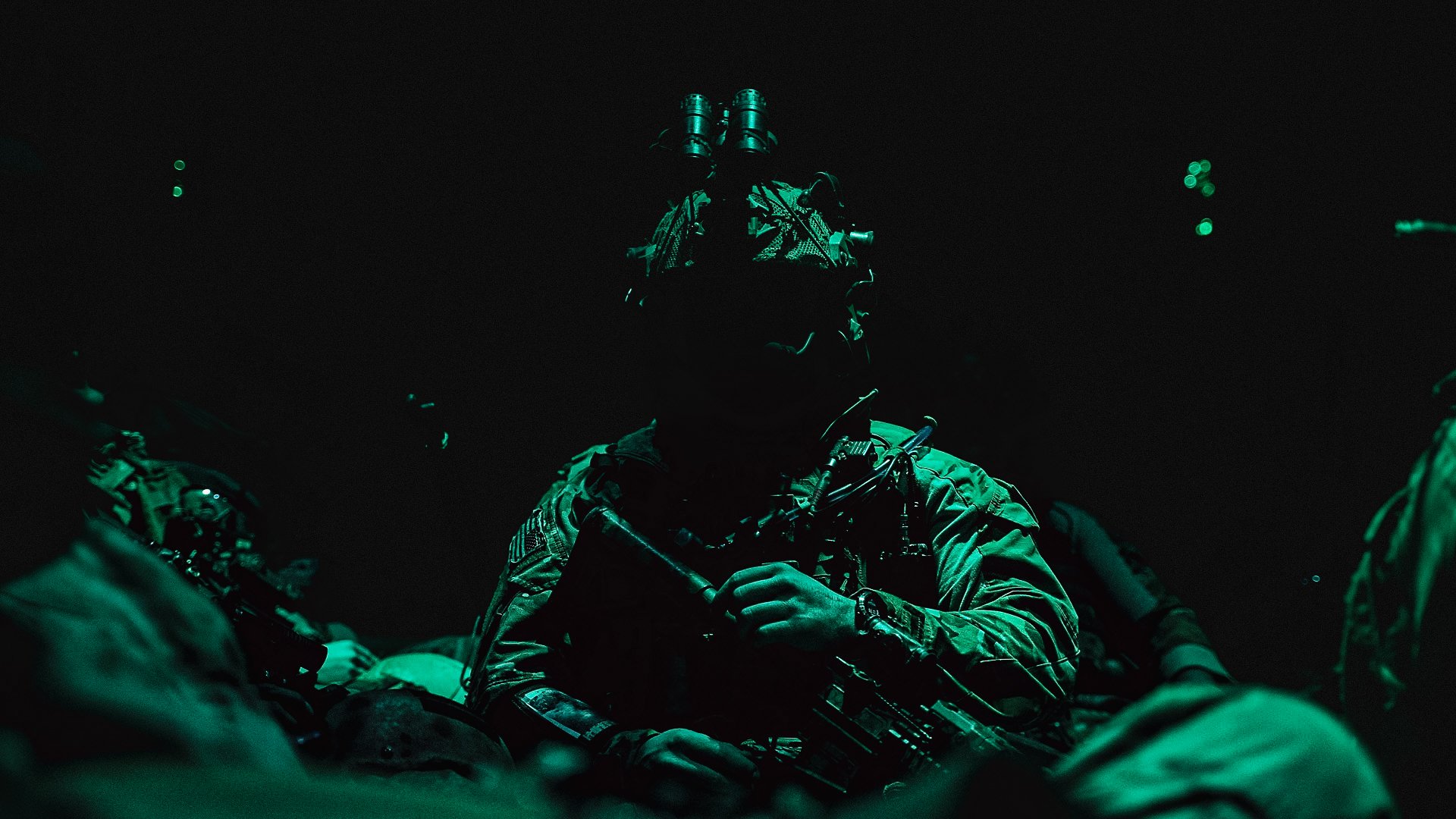
Army Rangers conduct combat operations in support of Operation Resolute Support in southeast Afghanistan in May 2019. US Army photo by Sgt. Jaerett Engeseth.
Rogers’ Rangers was a light infantry unit composed of 600 men, all of whom Rogers himself had handpicked for the assignment. They specialized in long-range reconnaissance and asymmetrical combat. Their unconventional tactics and methods were codified in a soldiering manual written by Rogers and called the 28 “Rules of Ranging.” Many of the rules are still adhered to by the 75th Ranger Regiment today, hence why Rogers is frequently credited as the unit’s founder.
Rogers’ Rangers disbanded after the French and Indian War. Some two decades later, when the American colonists rose up to fight against the British and win their independence, Rogers reformed the unit. However, this time he called his outfit the Queen’s Rangers, and their mission was to help quash the rebellion. Many of the original Rangers left the unit and joined the rebels. Veterans of Rogers’ Rangers fought on both sides of the war’s most pivotal battles, including at Lexington and Concord.
Related: Army Rangers Killed or Captured Over 1,900 Terrorists On Last Deployment
The Greatest Generation
Rogers disbanded his Rangers following the American Revolution, and such units remained a thing of the past throughout the 19th and early 20th centuries.
Then, at the onset of the Second World War, Army Chief of Staff Gen. George Marshall realized the need to form specialized light infantry units capable of conducting unconventional operations and also supporting conventional ground forces in large, complex missions.
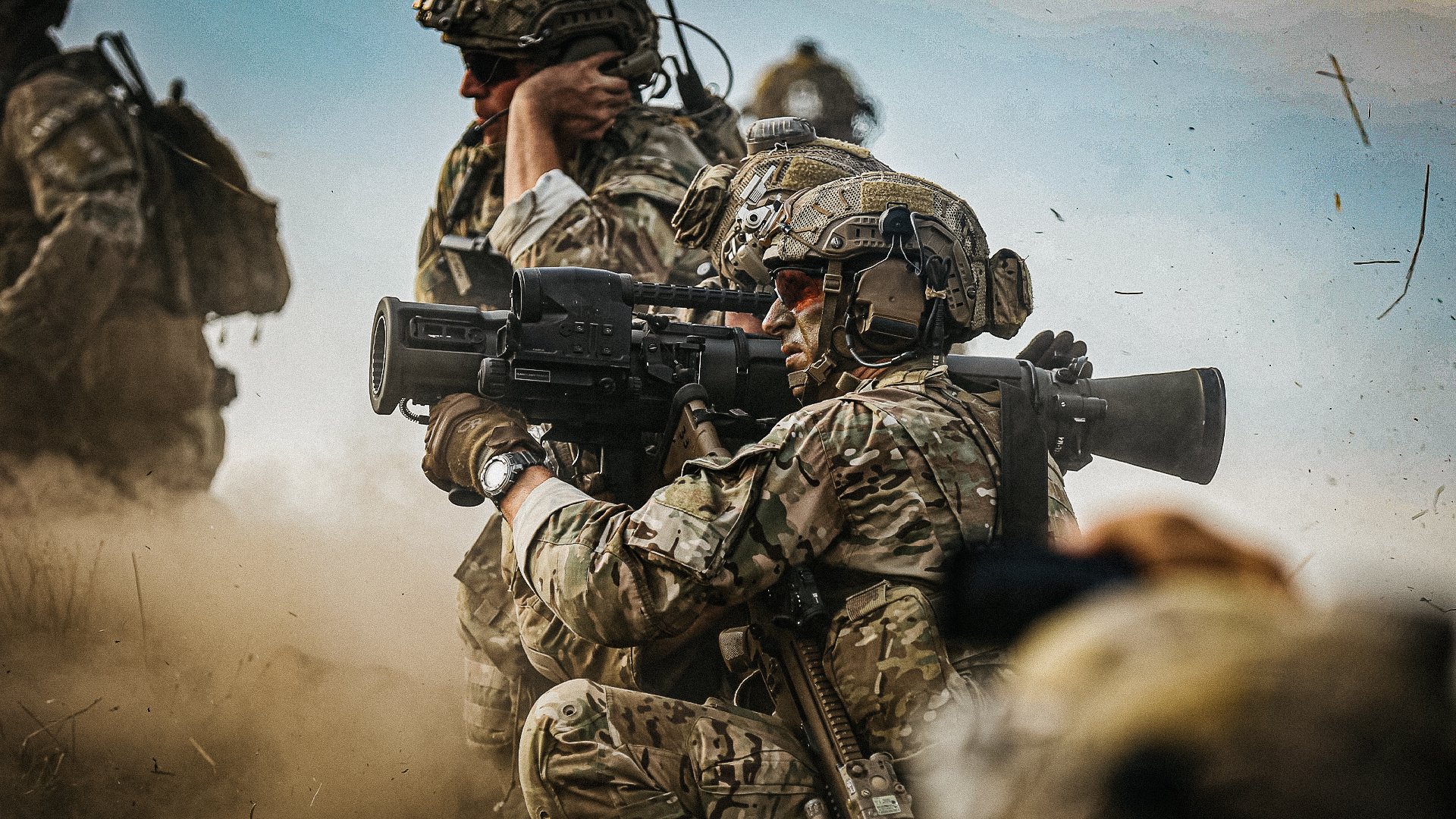
A Ranger fires a Carl Gustaf recoilless rifle during a training exercise. US Army photo by Spc. Garrett Shreffler.
On June 8, 1942, the US Army’s 1st Ranger Battalion was stood up at Carrickfergus, Northern Ireland, and placed under the command of Maj. William Darby. It was Darby’s Rangers who accompanied the Canadians in their failed assault on Dieppe.
Before long, there were three Ranger battalions on the ground in Europe. In 1943, the 1st, 3rd, and 4th Ranger Battalions were all deployed to Italy. That same year, two more battalions of Rangers — the 2nd and 5th — were formed. The 2nd and 5th remained on the sidelines until June 1944, when they helped spearhead the invasion of Normandy. It was there, on the beaches and cliffs of northern France, that the Rangers solidified their legacy.
Related: Heroic Merrill’s Marauders Receive the Congressional Gold Medal
Rangers Lead the Way
During the invasion of Normandy, three companies from the 2nd Ranger Battalion were given the difficult mission of seizing four fortified German artillery emplacements atop La Pointe du Hoc, a promontory overlooking the English Channel. To reach their objective, the Rangers had to scale 100-foot cliffs under fire. They lost 135 men before finally killing the German defenders and destroying their cannons.
While companies D, E, and F were fighting for La Pointe du Hoc, the rest of 2nd Ranger Battalion and all of the 5th Ranger Battalion were leading the assault on Omaha Beach.

Soldiers with 75th Ranger Regiment scale the cliffs like Rangers did during Operation Overlord at Omaha Beach, Pointe du Hoc, Normandy, France, June 5, 2019. US Army photo by Markus Rauchenberger.
When soldiers of the 29th Infantry Division found themselves pinned down on Omaha, their commander, Gen. Norman Cota, called upon the 5th Ranger Regiment to break the stalemate, famously shouting, “Well, then, goddammit, Rangers, lead the way!”
The 5th Ranger Regiment did exactly that. Braving a relentless barrage of machine gun and artillery fire, the Rangers broke through the German defenses and opened a path for the infantry to move inland. “Rangers Lead the Way” has since become an official motto of the 75th Ranger Regiment.
Related: Dispatch from Normandy: The Rangers of Pointe Du Hoc
Merrill’s Marauders
As the Ranger battalions were leading the way through Western Europe, another group of elite soldiers were fighting with distinction in the China-Burma-India theater. The soldiers, members of the 5307th Composite Unit (Provisional), would come to be known as Merrill’s Marauders after their leader, Gen. Frank Merrill.
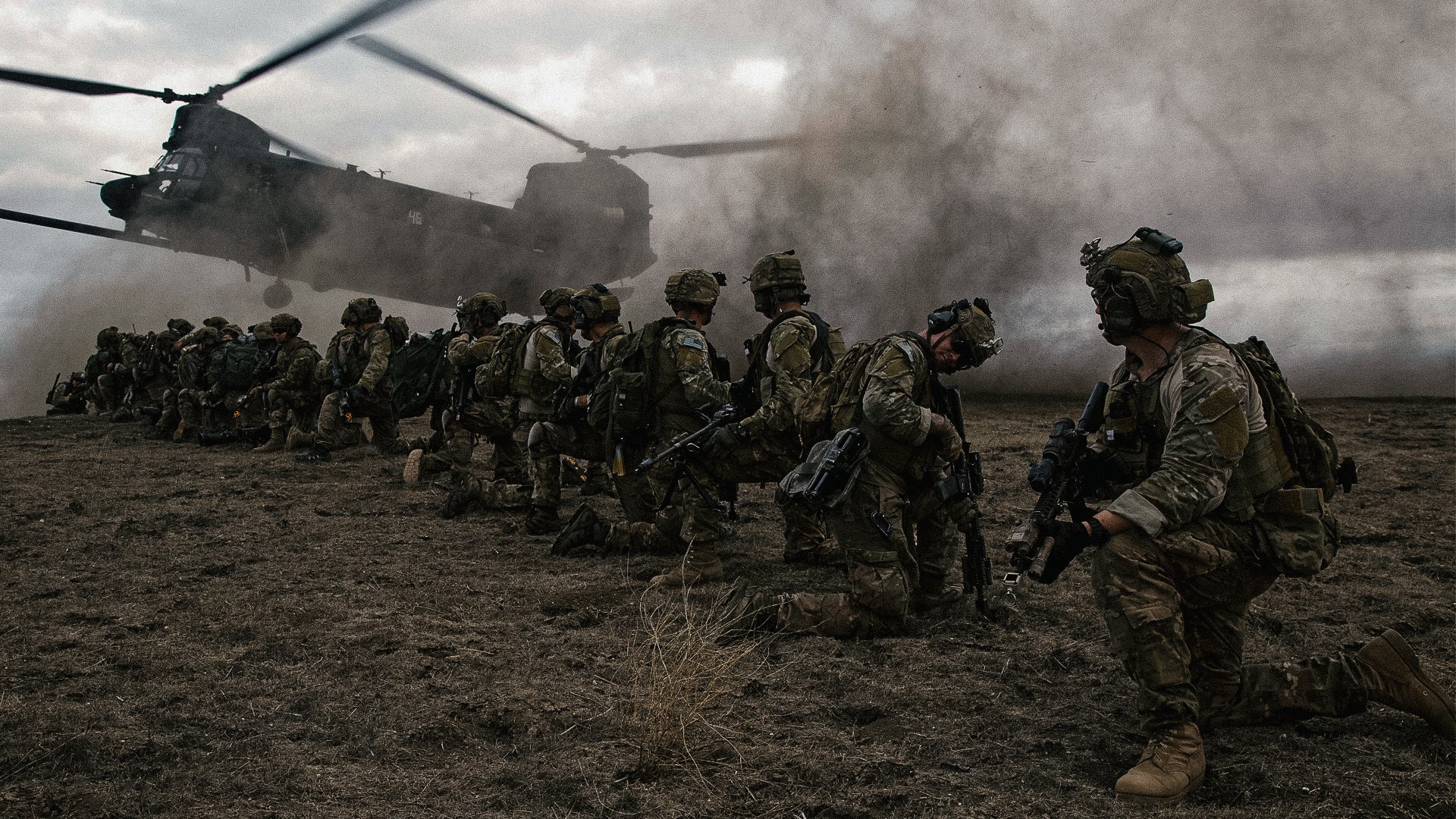
Army Rangers, assigned to 2nd Battalion, 75th Ranger Regiment, prepare for extraction from their objective during Task Force Training on Fort Hunter Liggett, California, Jan. 30, 2014. US Army photo by Spc. Steven Hitchcock.
During World War II, Merrill’s Marauders spent more time operating behind enemy lines than any other unit of the US Army. They traveled more than 750 miles on foot, mostly through thick jungle, and engaged numerically superior Japanese forces on 32 different occasions. After five months of combat, every soldier in the unit had been awarded at least one Bronze Star. Their hard-earned expertise in long-range reconnaissance, unconventional warfare, and jungle survival was foundational to America’s modern special operations units.
On August 10, 1944, Merrill's Marauders were consolidated into the 475th Infantry Regiment, whose name was later shortened to the 75th Infantry Regiment and eventually the 75th Ranger Regiment. Today, the 75th’s uniform is still adorned with the same shoulder insignia worn by the Marauders.
Related: How Merrill’s Marauders Waged an Unconventional War in the Burma Jungles of World War II
Modernization of the Regiment
In the decades following World War II, the Rangers continued to distinguish themselves as the Army’s premier direct-action force. In Korea, 100 Rangers gave their lives conducting specialized missions, such as scouting, air assaults, and spearheading ground attacks. Later, in Vietnam, the Rangers operated much like the Marauders had in the China-Burma-India theater, often traversing the jungle on foot to perform reconnaissance missions deep behind enemy lines.
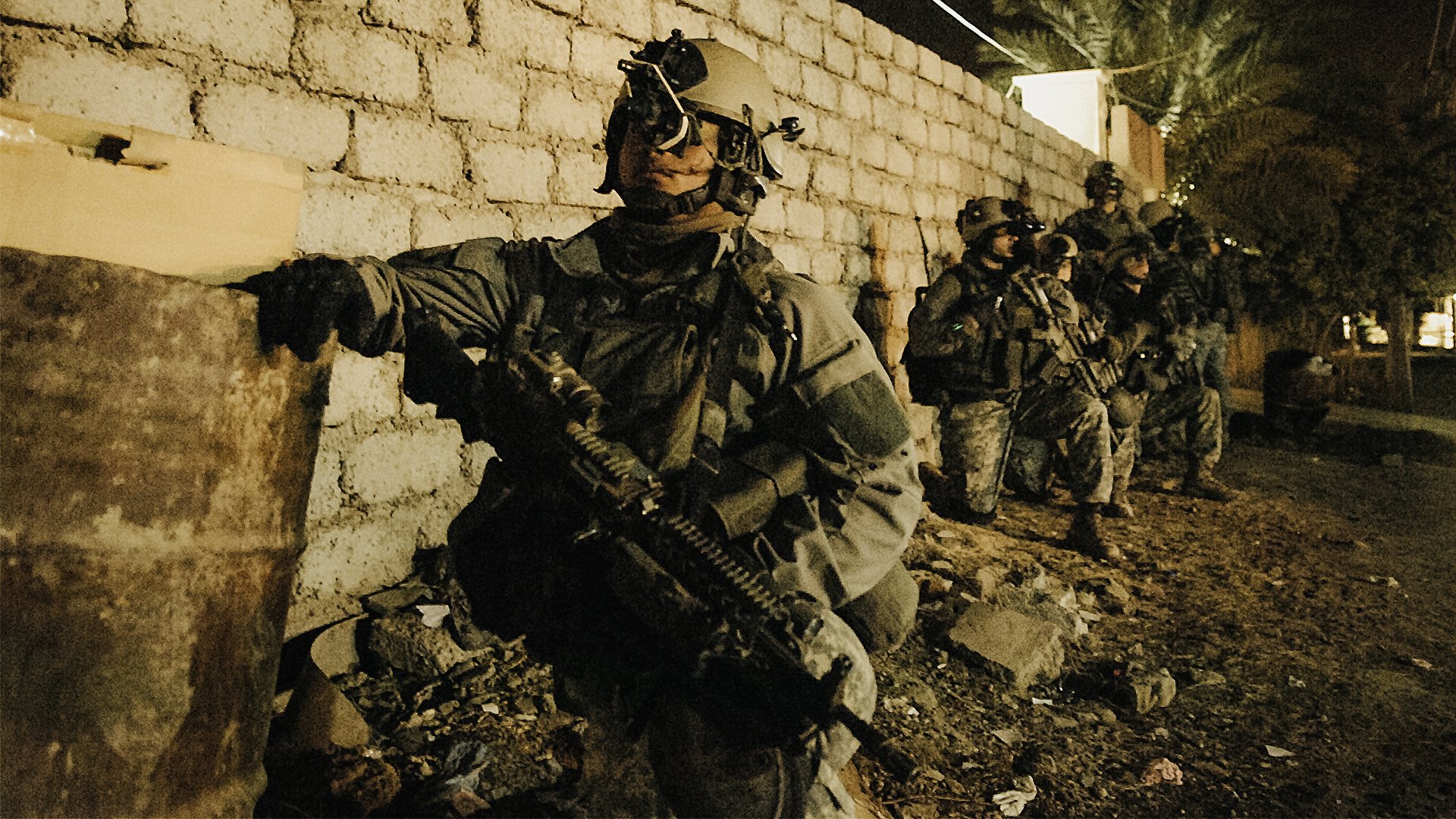
Members of the 75th Ranger Regiment conduct a security halt in Iraq on April 26, 2007. Photo courtesy of Wikimedia Commons.
The 75th Ranger Regiment remained active throughout the 1980s and 1990s. During the 1983 invasion of Grenada, two battalions of Rangers conducted a low-level parachute assault to seize a strategically important airfield. Six years later, the entire regiment conducted two parachute assaults during the invasion of Panama.
In October 1993, Rangers participated in the infamous Battle of Mogadishu. The 18-hour firefight, which claimed the lives of 19 Americans, including six Rangers, would amount to the single deadliest day in US special operations history.
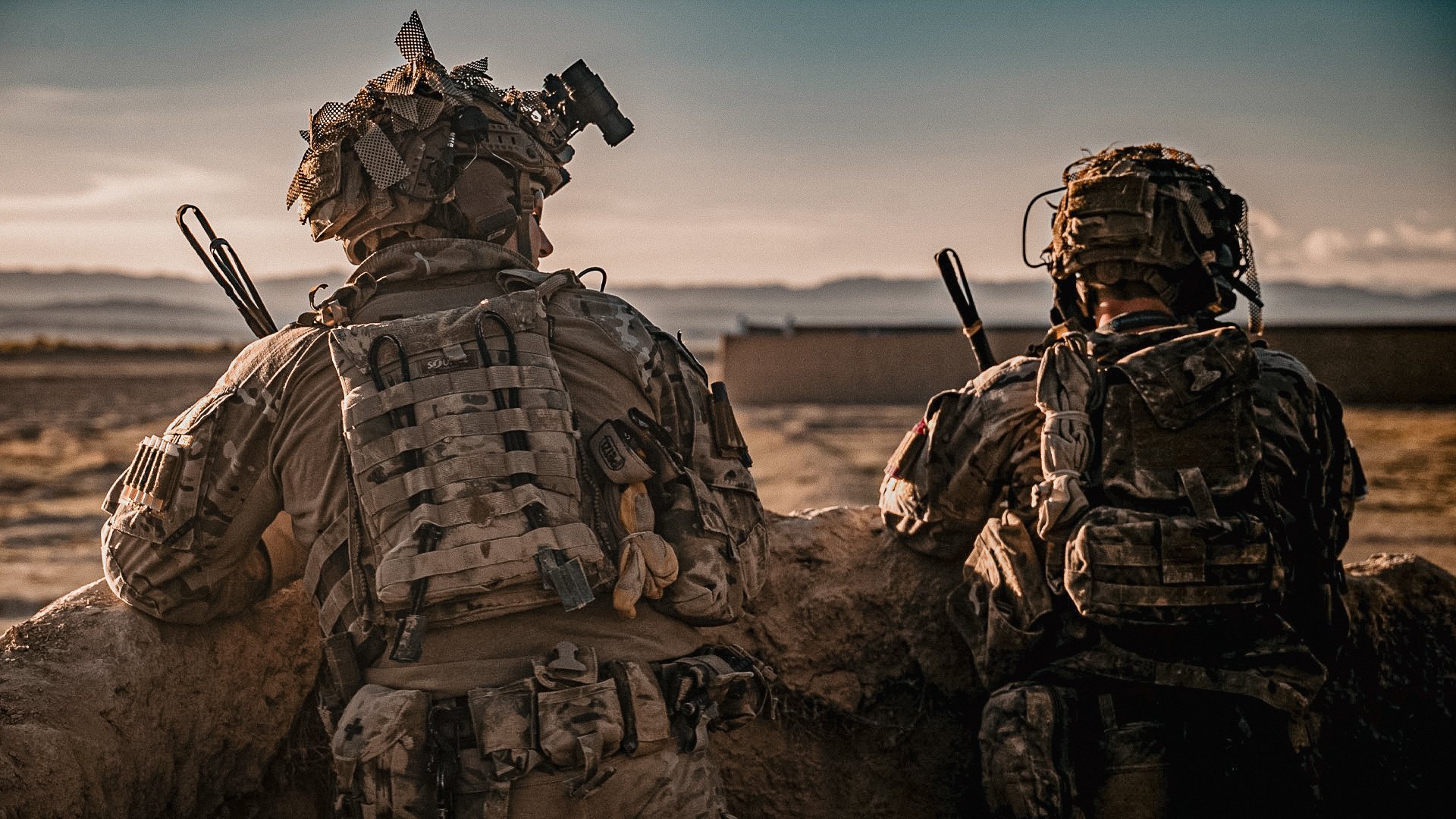
Army Rangers conduct combat operations in support of Operation Resolute Support in southeast Afghanistan in April 2019. US Army photo by Sgt. Jaerett Engeseth.
The 75th Ranger Regiment played a central role in the Global War on Terror, deploying to Iraq and Afghanistan frequently throughout the 20-year conflict. In fact, between the regiment’s various battalions, Rangers were on the ground in Afghanistan for 7,000 straight days. And they never ran out of steam. During one of their last GWOT deployments, in 2019, the 1st Ranger Battalion reported killing or capturing more than 1,900 terrorists. It was the battalion’s 22nd deployment of the war.
What Does It Take to Be a Ranger?
Today, the 75th Ranger Regiment is the US Army’s only special operations light infantry unit. With a mission set that includes seizing and holding key terrain, capturing or killing high-profile enemy combatants, and direct-action raids, the regiment is capable of deploying all three battalions anywhere in the world within 18 hours.
In order to become a member of the 75th Ranger Regiment, enlisted soldiers and commissioned officers alike must pass a grueling selection process. It begins with the Ranger Assessment and Selection Program (RASP). To qualify for the program, a soldier must be a US citizen with a military occupational specialty that exists in the regiment. They must also pass a Ranger Fitness Test, a water survival assessment, and a 12-mile march in less than three hours while carrying a rifle and a 35-pound pack. All applicants must also volunteer for airborne training.
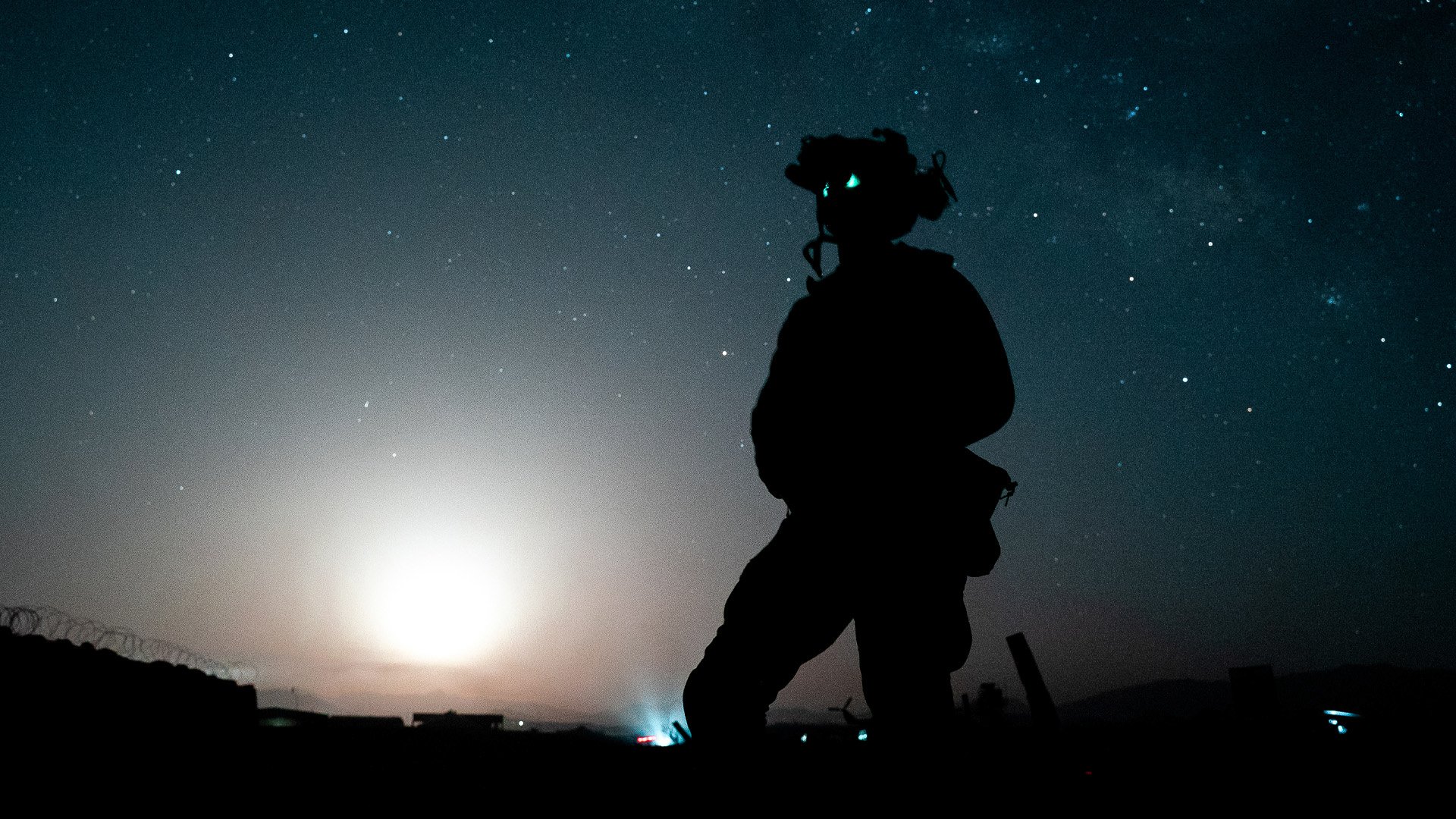
A Ranger in Southeast Afghanistan, April 2019. US Army photo by Sgt. Jaerett Engeseth.
For enlisted soldiers below the rank of E-6, RASP is an eight-week training course designed to determine whether candidates are mentally and physically cut out for the regiment. During the eight weeks, candidates endure food and sleep deprivation while working to develop skills such as land navigation, marksmanship, and special tactics. Meanwhile, for soldiers above the rank of E-5, officers, and warrant officers, RASP is only 21 days, but has an added emphasis on leadership training exercises.
Upon graduating from RASP, soldiers are issued the coveted tan beret and 75th Ranger Regiment scroll that are exclusively worn by members of the unit. As members of the regiment, Rangers train continuously, honing the specialized skills that distinguish them as some of the Army’s most dependable warfighters.
Read Next: 75th Ranger Regiment Teams Sweep Top 4 Spots At Best Ranger Competition
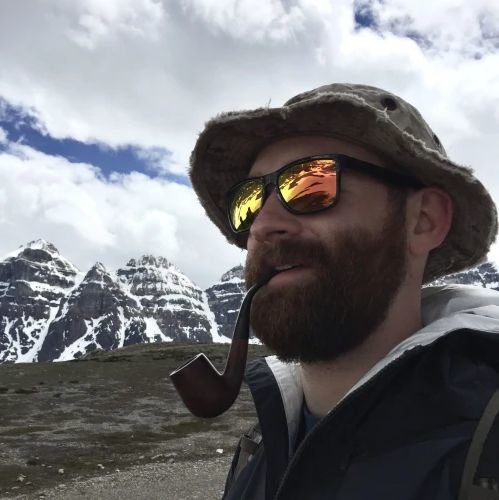
Mac Caltrider is a senior staff writer for Coffee or Die Magazine. He served in the US Marine Corps and is a former police officer. Caltrider earned his bachelor’s degree in history and now reads anything he can get his hands on. He is also the creator of Pipes & Pages, a site intended to increase readership among enlisted troops. Caltrider spends most of his time reading, writing, and waging a one-man war against premature hair loss.
BRCC and Bad Moon Print Press team up for an exclusive, limited-edition T-shirt design!
BRCC partners with Team Room Design for an exclusive T-shirt release!
Thirty Seconds Out has partnered with BRCC for an exclusive shirt design invoking the God of Winter.
Lucas O'Hara of Grizzly Forge has teamed up with BRCC for a badass, exclusive Shirt Club T-shirt design featuring his most popular knife and tiomahawk.
Coffee or Die sits down with one of the graphic designers behind Black Rifle Coffee's signature look and vibe.
Biden will award the Medal of Honor to a Vietnam War Army helicopter pilot who risked his life to save a reconnaissance team from almost certain death.
Ever wonder how much Jack Mandaville would f*ck sh*t up if he went back in time? The American Revolution didn't even see him coming.
A nearly 200-year-old West Point time capsule that at first appeared to yield little more than dust contains hidden treasure, the US Military Academy said.












